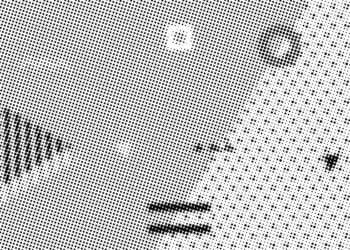COVID has complicated everything, and information security audits are no exception. Tugboat Logic’s CPO, Patrick Murray, explores the various challenges organizations face in conducting infosec audits remotely and outlines best practices to make the transition.
With the number of different issues companies are dealing with now, from financial fallout to having to put into place new infrastructure and policies, compliance can easily fall by the wayside. Security audits can be a challenge in the best and easiest of times – and the mass move to remote work during the pandemic has only further complicated things. That means something like SOC 2 compliance can take a back seat – but the consequences of letting it slide are significant.
A big part of the problem is that for many organizations, audits can seem like a complete mystery. A lot of concern and frustration that can result from a variety of areas, such as not knowing the scope of an audit, how much time it will take and how much it will cost. Below are strategies business leaders can apply to best work with auditors, handle evidence collection and implement compliance controls given the new complexities of the business landscape.
Challenges of Audits and Compliance in a Remote Work World
Making the switch to a fully remote workforce has been challenging for companies, to say the least, and so has moving to remote audits. Time is being spent not only on moving to remote audits, but also on maintaining the required rigor for controls. As a result, audits are sometimes getting delayed. The coronavirus-spurred recession has also led some companies to downsize, which means it can also take longer to gather evidence for audits because there are fewer people. A best practice is to designate a project manager to keep track of everything and everyone so that your audit doesn’t get delayed.
Startups often run on a shoestring, so the odds of having someone on staff who knows how to do this work are low. In addition, there’s an ongoing shortage of cybersecurity talent, but there’s no shortage of tasks involved in audits; you must implement and gather evidence for an average of 75 to 100 security controls, many of which need to be collected multiple times over an audit observation period of one year.
And consultants are very little help when it comes to finding out what an information security audit entails, how much it costs to prepare or how long the preparation takes – after all, consultants do get paid by the hour. It’s like taking a test, but you don’t know what’s on the test. Faced with this ambiguity and difficulty, many organizations procrastinate. However, the bottom line is that a security audit is not rocket science. Security is finite, and what needs to be protected is the same across the board. Focus on what is susceptible and where.
Maintaining security has already been a challenge even before organizations moved to remote work. With more people working from home, a new risk assessment needs to be done to ensure people are secure while working from home. New measures need to be implemented, such as a mobile device management solution to protect work data on personal devices. Or, if you’ve moved to SaaS apps for remote collaboration, such as Zoom or Slack, you need to ensure they’ve been configured securely. And you need to have a solid plan in place for on-boarding and off-boarding employees to make sure you don’t have non-permitted access to enterprise apps and other tools.
Best Practices
With neither auditors nor customers on-site at the office, the evidence collection process requires a slightly different approach. Remote or not, keeping all the evidence in one place and making sure that collection activities are being done from the get-go will save hassle. Time, heartache and surprises can also be avoided by creating a process with your auditor at the very beginning of your engagement.
That brings us to another important factor: Your relationship with your auditor. Auditors are not your enemy. They aren’t out to get you. They want you to pass, and they want to help you pass. The more secure their clients are, the better it is for everyone. Communication is essential. Even if it feels like over-communicating, it’s better to have your auditor know that you’re consistently making a good-faith attempt to implement controls and heed their guidance. Partner for the win – use your auditor to “block and tackle” client requests that seem like overkill, such as clients asking you to get SOC 2 certified in all five Trust Services Categories when the vast majority of companies need at most one to three categories.
Remote Compliance is Possible
In the midst of growing a business during COVID-19, audit compliance remains extremely important. The stakes are high. Work-from-home requirements make the evidence collection process even tougher, but it is still entirely possible to be audit-ready during this time. Put one person in charge of the process and focus on a limited number of controls.
Centralize your evidence and make friends with your auditor, who is actually on your side and will work with you – not against you – to help you pass your audit. These best practices will help you lead a company that is not only growing, but also compliant, removing at least one stressor from your plate and making more room in your mind for innovative and strategic thinking.



 Patrick Murray is Chief Product Officer and early founding member of
Patrick Murray is Chief Product Officer and early founding member of 









